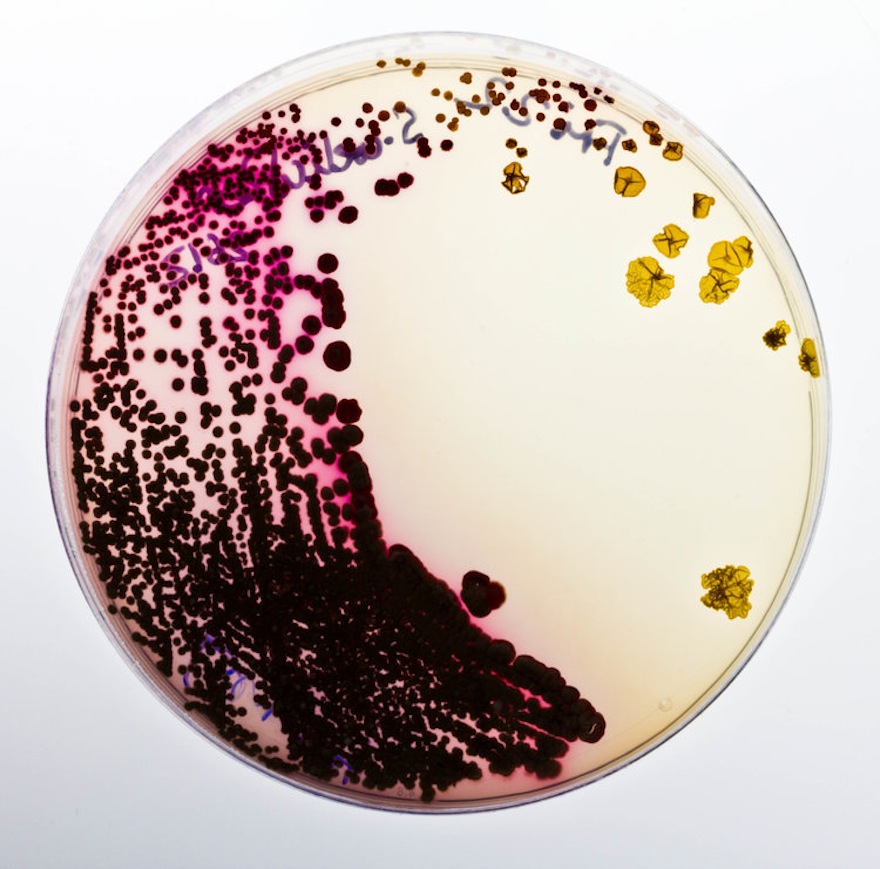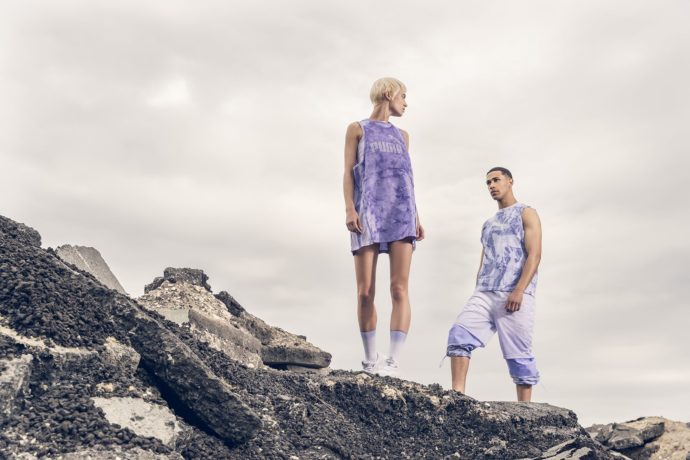ABSTRACT
Up to 9 trillion gallons of water is used in the textile industry. Dyes and chemicals released into rivers obstruct sunlight and increase Biological Oxygen Demand (BOD), leading towards having devastating effects on marine organisms and toxic habitat.
Solutions have been set forth like prior to discharge, treatment of wastewater is done until the solution is safe and nontoxic to be released into the rivers and seas. But this treatment is expensive. 10 per cent of global greenhouse gases are from the textile and fashion industry as stated by UN. Workers need to be protected as well, since they are in direct contact with some hazardous dyes. More conscious decisions are to be made.
Inside the factory, sustainable dyeing machinery and production have cropped up that cut the water use and energy use is lower. Non aqueous production, textile scrap transformation to dye, biomimicry of butterfly wings are some of the methods that are steps towards an innovative future of sustainable living. Along with the above, bacteria have been found to churn out dyed textiles that have superior colorfastness and are the best solution in keeping the industry environment friendly.
Keywords: Sustainable dye, bacteria, fermentation, pigment, soundwaves
INTRODUCTION
The structural switch in the way our society views production and consumption occurred because of the way petroleum-based industry has impacted the environment. Sustainability and eco-friendly became the buzzword.

Today, more than 8,000 acids, solvents and additives are used to produce various shades and effects on fabrics. Most modern chemical dyes end up in industrial waste water after dye production, they are toxic to both humans and animals. Arsenic, formaldehyde and sulphur are some of the examples of harmful ones.
Natural dyes derived from plants and flowers have been used traditionally to dye fabrics. Indigo was traced to a 6,000-year-old piece of fabric found by archaeologists on the coast of Peru. Crimson dye was extracted by Aztec and Mayan from insects, Mediterranean people extracted royal purple dye from snails. Record of fungi and mushroom made dyes is present, but not of bacteria, the most biodiverse sphere of life. Bacteria has uses in food processing, medical, and the ecosystems.
We can access the finesse of nature, but have to live within the limits of the planet’s boundaries, so that we do not mirror the damaging legacy of the oil age.
In China, there’s a joke that you can tell the ‘it’ colour of the season by looking at the colour of the rivers, as pipes from some clothing factories in China, Bangladesh and Indonesia feed fast fashion practices. They dump coloured wastewater into local streams and waterways from which people drink and eat fish from, as Orsola de Castrocan stated in the documentary RiverBlue. Someday, all fabrics may be dyed by bioengineered microbes, to serve the aim to go the pro-environment way.
BACTERIAL DYES IN PRODUCTION
The Austrian company, Vienna textile lab produced bacteria dyed textiles. They took already existing, naturally occurring bacteria, which are grown to extract colorants that are then purified into pigments.
It can dye any type of material, from, angora, cotton and polyester. With a wide range of colours from orange red purple blue. A synthetic takes 500 litres of water to produce a dyed batch of colour, however in this process no water is required.

It also has advantage over natural dyes. It does not rely on the season or temperature to grow crops. It is stored in a laboratory and can be reproduced and multiplied at any time.
DNA & MICROORGANISM
A UK biotech company Colorifix founded by Cambridge University scientists, copies the dynamics of nature in a laboratory setting, by replicating the ‘DNA message’ in an organism that codes for colour.
By scraping a few cells off from feather of a parrot and look for the DNA message ‘make red’. The same message is put into the microorganism that will make that identical red that the parrot makes, the same way that the parrot makes it.
In a fermenting machine, it duplicates the dyed bacterial cells, feeding them by-products of agricultural industry sugar molasses and nitrogen. Every 25 minutes, the cells replicate themselves. The method of fermentation duplicates the bacteria similar to beer making, but makes pigments instead of alcohol.
The dyed bacteria are then directly applied to the textile and heated until they burst, leaking their pigment onto the fabric. Then the cell membranes are washed but the colour remains.
Colorifix can provide five grams of colour-packed bacteria to a dyehouse rather than sending huge quantities of dye. In 10 days, the microorganisms can grow to the extent that the factory can manufacture 50 tonnes of dye solution a day.
These advantages got H&M to back up Colorifix as it uses 90 % less water and up to 40% less energy than traditional dyeing methods. It also eliminates the need for toxic chemicals.

Stella McCartney x Colorifix dye
FROM PLANT SUGAR AND MICROBES
A French start-up Pili, creates ready-to-use dyes from plant sugars and microbes.
Microorganisms, at room temperature, break down renewable plant materials like sugar and wood in fermentation tanks to turn them into dyes. To get the desired colours, the pigments are then removed from the bacteria and assembled. Experts in the field are worried about the regulatory concerns affecting the safe transport of live microbes.
They opposed Colorifix’s “grow your own” dyeing strategy because dyehouses would need to purchase fermenting equipment and undergo training. Such barriers may develop obstacle to transitioning to sustainable dyes.
DYE FROM SOIL BACTERIA
Natsai Audrey Chieza grew bacteria directly on silk to naturally dye textiles. Harmless soil bacteria, Streptomyces coelicolor, lives in a community with other organisms, decomposing organic matter. It produces an actinorhodin antibiotic which, depending on the acidity of the environment, varies in colour from pink to blue to purple. Streptomyces has antibiotic properties, which have distinct colours. The reason(s) why it makes antibiotics or pigments remain mysterious.
In a small-scale experiment, Natsai immersed the fabric pieces in a diluted liquid culture of Streptomyces coelicolor and set them on the layer of an agar growth medium. Colonies developed in the plate after a few days of incubation, both on top of the cloth and in the area between the fabric and the medium. As the colonies expanded, far more pigment was created by millions of cells that the colour became evident to the naked eye. The colonies gradually developed fluffy aerial mycelia, and the cloth gradually became like a tie-dye t-shirt of red, pink, purple and blue colour.
Using advanced mass spectrometry to chemically map the fabrics, we are able to see which pigment molecules are where and when.
- Formation of patterns
Colonies grow around the plate at different speeds. they do not evolve at all in certain areas, due to the fabric ‘s texture and positioning. The bacteria that thrive most are closest to the medium have direct access to water and nutrients.
Crinkles of fabric raised above the media, have less colonies, so the bacteria depend on what will diffuse up the fabric and what nutrients have initially been absorbed into the fabric.

2. Pigmentation
Pink to red prodiginine molecules and water-soluble actinorhodin molecules are made. Color of actinorhodin depends on pH as it is transferred to an extracellular environment. in traditional laboratory cultures it is blue. but intense magenta in flat areas of fabric. it is presumed that a mixture of the red prodiginine stays with the colonies and the blue actinorhodin spreads out.
In areas that can’t detect red from intracellular prodiginines, where actinorhodin diffuses out, blue color is observed even though they are near large colonies. Surrounding pH levels may change as nutrients metabolize, creating a microenvironment mosaic and in more acidic areas, different shades of actinorhodin are formed. Every piece of fabric will be uniquely dyed/patterned.
Color changes of microbe occurs due to pH of the medium it grows inside, thereby tweaking the environment, it’s possible to create navy blue or bright pink.
SOIL BACTERIA CLOSER TO HOME
Vaishali Kulkarni, founder of biotech studio KBCols Sciences, in Pune, developed a primary set of hues from bacteria usually found in the soil. She noticed wastewater from the Indian textile dyeing industries and started working on treating it. But instead decided to eliminate the production of sewage altogether. She aimed to invent an environmentally sustainable way to target the textile dyeing industry, using bacteria that could replace the manufacture and use of toxic synthetic colours.
BACTERIA AND SOUNDWAVES
A biodesign research project, Living Colour, founded by Laura Luchtman and Ilfa Siebenhaar run a Netherlands-based lab. They work with living organisms i.e. strains of bacteria and soundwaves that can create new aesthetics of color. They are not inclined towards genetic engineering.
They use leftover pigment in products that require less saturated pigments than textiles.
Pigments like carotenoids and violacein are some colorful molecules produced by bacteria. However only aerobic bacteria are pigmented. They have clinical properties including antioxidant, anti-biotic, anti-viral and anti-bacterial. Pigment production depends on light, pH, temperature, nutritional growth medium.
Janthinobacterium lividum (purple), is excellent for textile dyeing. Arthrobacter agilis (red) and micrococcus luteus (yellow), are difficult to grow for pigments. Bacterial dyes fixes to almost any fibre – organic cotton, linen, wool, ahimsa peace silk, Tencel, viscose, polyester, elastane, polyamide, Pyratex Health fabric and even mycelium by NEFFA and plant root textile by Diana Scherer were tested on.

CONCLUSION
About 20% of global industrial water emissions are from textile dyeing according to the World Bank.
Plant dyes have limitations, like instability against light and heat, limited color palette, low water solubility, water requirement, chemical fixing agents. Colors derived from selected plants and animals, are time-consuming, expensive to produce.
A drastically new alternative can be applied that reduces the use of harsh chemistry and dramatically reduces water use while meeting all major market requirements.
Synthetic biology can benefit brands, by providing an innovation in coloring textiles; help nature in recovering, by using processes that are chemical free, need less energy and water. In the end, consumers get products that are safe and are not damaging the environment, during production and after use.
REFERENCES
- https://materialconnexion.com/material-insight-bacteria-dyed-textiles/#:~:text=The%20Vienna%20Textile%20Lab%20created,100%25%20natural%20and%20chemical%20free.&text=The%20color%20is%20dependent%20on%20the%20type%20of%20bacteria%20used.
- https://asm.org/Articles/2017/November/bacterial-dyes-in-fashion
- Louise K. Charkoudian, Jay T. Fitzgerald, Chaitan Khosla, Andrea Champlin. 2010. In Living Color: Bacterial Pigments as an Untapped Resource in the Classroom and Beyond.
https://journals.plos.org/plosbiology/article?id=10.1371/journal.pbio.1000510
- https://www.ecowatch.com/bacteria-dye-fashion-industry-2647048293.html?rebelltitem=6#rebelltitem6
- https://www.fastcompany.com/90257662/these-gorgeous-colors-come-from-dye-made-by-bacteria-not-chemicals
- https://medium.com/swlh/beautiful-bacteria-how-biodesign-is-changing-the-way-the-fashion-industry-produces-colour-cc481bfb851a
- https://www.isc3.org/en/activities/innovation/start-up-of-the-month/article/kbcols-produces-environmentally-friendly-colourants-from-microbes-1.html

